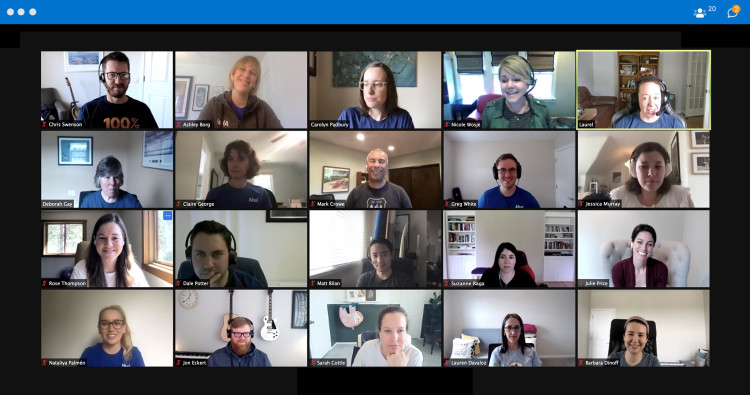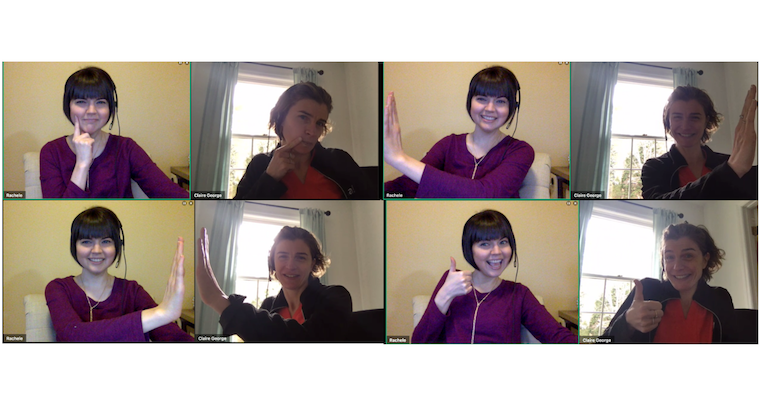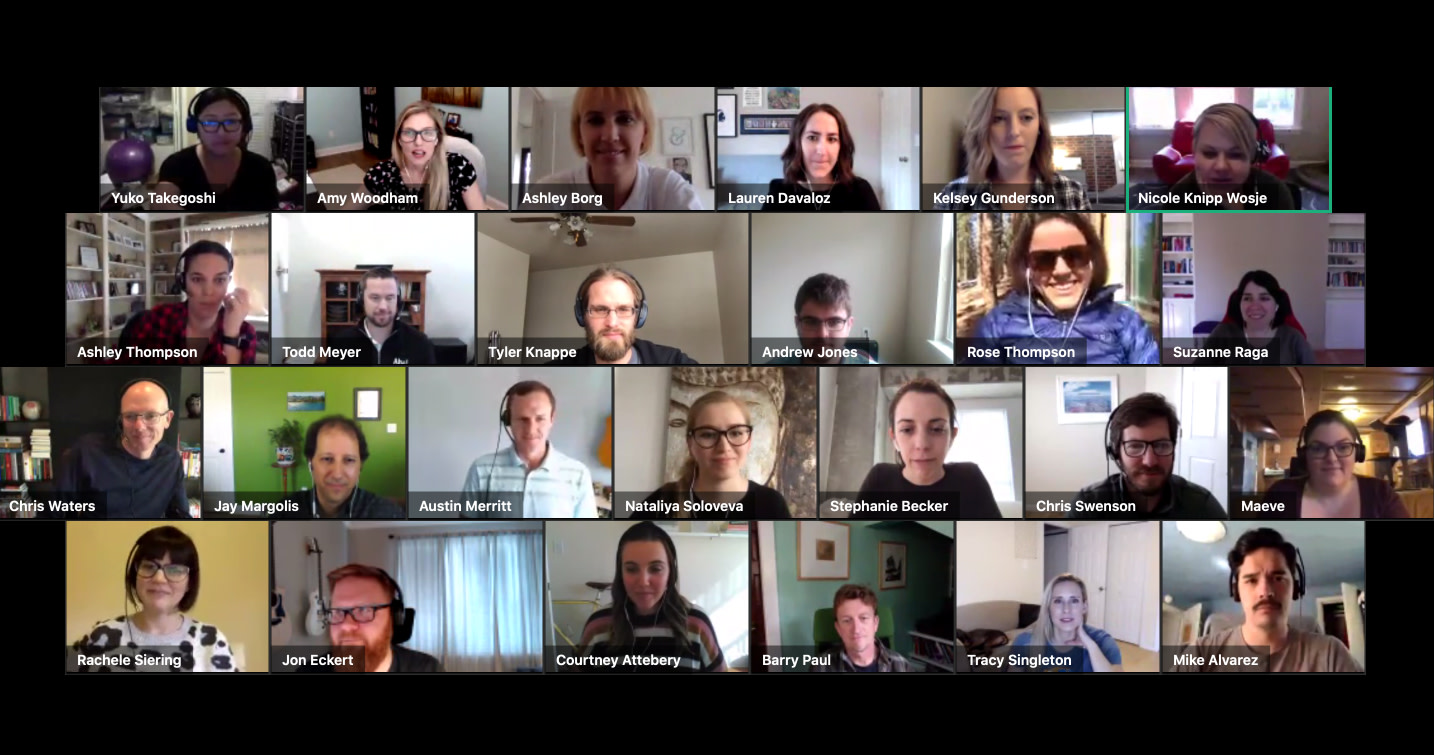
Aha! remote team meeting | Aha! 2021
4 lessons from 8 years of a completely remote team
Last updated: November 2024
Eight years. 110 people. One shared purpose. Aha! turned eight this year with some virtual high-fives and shout-outs. The day mostly passed without fanfare though — our team is busy and focused on the future. But it is worth pausing to recognize how well we continue to perform. Aha! has always been 100 percent distributed and I believe remote work continues to be integral to our growth.
Being a remote-first company is the best way for us to hire exceptional people, achieve great things together, and be happy doing it.
Way back in 2013 when we founded the company, plenty of folks were skeptical that my co-founder Dr. Chris Waters and I were going entirely remote. We knew it would work though because we were just coming off of three years working remotely for Citrix after they acquired our previous company. But people asked how would we collaborate and grow together? At what size would we eventually buckle and get an office? (Answers: With speedy kindness and never.) People questioned how the team would stay engaged and work together cohesively. No matter what the skeptics said, we knew that building any team required intention and care. Being co-located does not guarantee value creation and a meaningful future.
Remote work is less of an oddity these days. Many more teams are distributed — by design or due to the pandemic. The latter, of course, was sudden and unexpected. Companies and individuals had little time to prepare for the transition. If you were forced to work remotely for the first time, this was not an ideal way to start. Quarantined and unable to leave the house is not a true representation of remote work in practice.
Despite the unusual circumstances, many people felt the benefits of remote work. Perceptions shifted. I talk to people all the time who now love the autonomy and nonexistent commute. But there are some who wonder what they are missing being out of the office. Some are eager to get back to working "as usual."
But achievement will never be about a place – it is about what is accomplished together regardless of where people are physically located.
It is more than possible to achieve together while apart. But it certainly takes intention. Aha! has matured since our days as an early-stage startup. One of the first (and most valuable) lessons we learned is the importance of a goal-first approach — aligning what the team is working on with company strategy. When there is no confusion about the "why" then the team can make decisions about where to spend time and effort.
Over the years our team has reckoned with more truths that I think are relevant for any company — whether you are considering a switch to remote work or just want to become more remote-friendly. Here are a few:
Guard rails deliver
I mentioned the importance of a clear strategy earlier. But you also need to be aligned on how to get the daily work done. You should not be wasting time attending status update meetings or reminding people of deadlines. Even worse, teams who rely on muddling through every project or task in a different way in the absence of clear workflows. We use our own software to make plans transparent and keep work on track. Defined processes, repeatable templates, and shared documentation help the team be hyper-productive.
Leaders lead
Team leads are entrusted with a company's most important asset — people. Remote leaders are held to an even higher standard. You need player-coaches who are genuinely interested in leadership. That word often gets thrown around without much thought, but leadership is really about enabling others to be successful. That is why we strive to promote team leads from within the company. When you are intimately familiar with the work — because you have done it yourself — then you are better able to empathize, offer critiques, and give real support.
Communication guides
You need exceptional communication skills when separated by geography and time zones. Frequent and meaningful conversations keep people engaged and accountable. Aha! teammates provide continuous feedback and commit to understanding the best way to communicate in a given situation (e.g., Slack, video chat, or comments in Aha! software). We are interrupt-driven which means we want to help each other when the need is most urgent. Someone pinging you means they need your help. So when in doubt, we hop on a quick call.
Learning grows
New teammates are often surprised by how robust our onboarding is for a company of our size. Someone just told me this today during a new hire orientation. Yep, we take it seriously. We want people to be successful and so we have invested heavily in a five- to eight-week program that immerses folks in our product and our culture. But professional development is ongoing. Team members also receive an annual education stipend to enroll in job-related classes. And we hold virtual learning sessions throughout the year — some focus on a specific discipline like writing or design while others explore more general skills like managing large-scale projects.
The reality is that teams can be extraordinarily collaborative without being in person.
There is no finish line to building a great remote culture. Our leadership team reflects often on what is working and what is not. And we have an annual lovability survey to keep us honest and measure how things are going. It is super important to us to take those responses seriously and we frequently implement meaningful changes as a result. For example, we recently expanded our continuing education benefit to include two days of paid time off for completing a course (in addition to the stipend).
Growing a sustainable and rewarding remote company takes everyday effort and intention. But that investment pays off when we see the results of what the team achieves together.
We love not having an office — you will too. Join our team.
Related:




